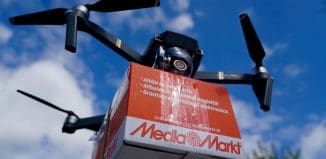Satellite Surveillance To Track Commercial Airplanes
This post is also available in:  עברית (Hebrew)
עברית (Hebrew)
by Konstantin Bodragin
Satellite surveillance is commonly thought of as belonging to the realm of spies, spooks, and secretive military intelligence types. Command, Control, Communications, Computers, and Intelligence (C4I) units in militaries the world over make extensive use of satellite technology in their efforts to bolster combat units’ capabilities, gether better intel, and monitor territory without risking the lives of soldiers in a field known as terrain dominance.
Now, satellite surveillance is on a fast track to helping the rest of us be safer, too.
The March 2014 disappearance of Malaysia Airlines flight 370 with 239 people on board exposed the shambles that is the worldwide air navigation system. That is, there is no system.
Currently, commercial airliners, civilian pilots and air-traffic controllers rely on a hodgepodge of measures for tracking varying arrays of data on airplanes’ flights. Ranging from sophisticated services capable of monitoring a plane’s fuel use, flight controls, landing gear and more, through systems that merely record and transmit altitude and navigation coordinates, to planes with no tracking system to speak of – the irregularity of available options makes for a very dangerous airspace.
The problem is further exacerbated by the fact that the current standard is radar-based. The movement of planes is monitored mostly through land-based stations, leaving around 70 per cent of the Earth’s surface uncovered. When disaster strikes, as it did with flight MH370, search and rescue teams are unable to operate effectively.
The issue received special attention from world powers and the United Nations, following the flight’s disappearance.
On Wednesday, a deal was reached at the World Radiocommunication Conference (WRC), that started this week and is comprised of more than 160 countries, paving the way for satellite-based tracking of flights.
Modern airplanes equipped with Automatic Dependent Surveillance-Broadcast (ADS-B) systems can send signals to ground monitoring stations. The agreement reached at the UN summit will allow ADS-B modules to communicate with satellites to greatly increase tracking capabilities. The accord allocates the 1087.7-1092.3 MHz radio frequency spectrum for this purpose. The move was advocated by the UN’s International Civil Aviation Organisation (ICAO).
“This extends ADS-B signals beyond line-of-sight to facilitate reporting the position of aircraft equipped with ADS-B anywhere in the world, including oceanic, polar and other remote areas,” the UN’s International Telecommunication Union (ITU) said in a statement.
Wider adoption of ADS-B will not only provide rescuers relevant up-to-the-minute information, but will also improve flight safety. Unlike other systems, ADS-B provides pilots with a 3D view of their airspace that was previously only available to air traffic controllers.
Better tracking provided in this manner could also allow airplanes to fly closer to each other, improving schedule and fuel efficiency.
Airlines and regulators were hit with harsh criticism following the disappearance of MH370 as their response to it demonstrated a pattern of inaction. The issue was previously brought to the spotlight after an Air France jet crashed in 2009. It seems they are now finally moving in the right direction.
“This is an excellent example of the ability of nations, working through the ITU process, to take action in improving peoples’ lives,” said US Ambassador Decker Anstrom, who is leading the US delegation at the conference. “The WRC’s action today will enable better tracking and location of aircraft that otherwise could disappear from terrestrial tracking systems,” he added.































